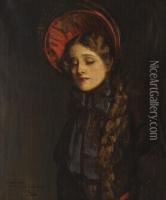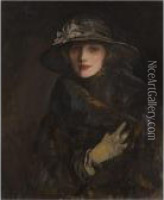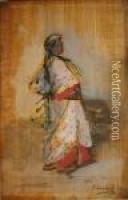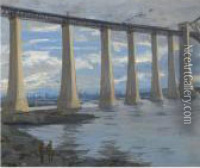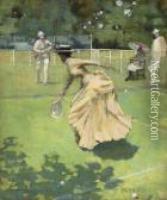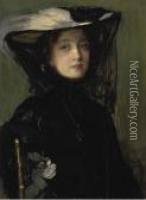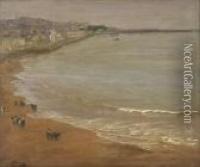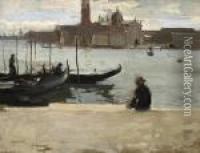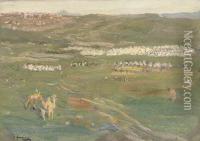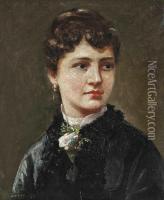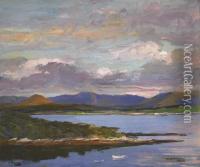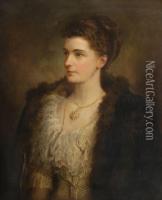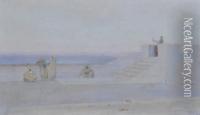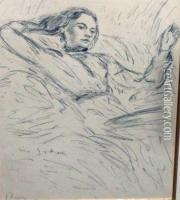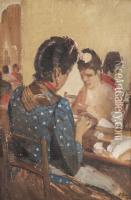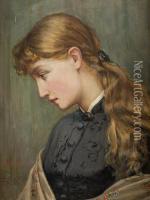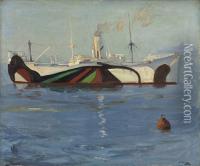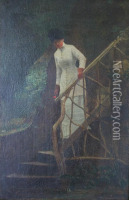John Lavery Paintings
Sir John Lavery was a prominent painter, best known for his portraits and wartime depictions. Born on March 20, 1856, in Belfast, Northern Ireland, Lavery became an orphan at a very young age and was raised by a relative. He began his artistic education at the Haldane Academy in Glasgow, Scotland, and later continued his studies in London and at the Académie Julian in Paris, where he was influenced by the work of the Impressionists.
Lavery's early work included landscapes and genre scenes, but he gained recognition for his portraiture skills. He became associated with the Glasgow School, a group of artists who were influenced by the French Impressionists and Whistler. His talent in capturing likeness and character led to numerous commissions, including official portraits of politicians, royalty, and public figures.
During World War I, Lavery was appointed as an official war artist. His wartime paintings documented various aspects of the conflict, including naval battles and scenes on the home front. After the war, his reputation as a society painter grew, and he painted the portraits of many significant personalities of the time.
Lavery was also known for his role in documenting significant historical events. He was present at the Irish Treaty negotiations in 1921 and produced a famous painting of the event, 'The Signing of the Irish Treaty.' His interest in Irish politics was also evident in his work, and he produced several paintings related to the topic throughout his career.
He was knighted in 1918 for his contributions to art and was later elected to the Royal Academy. Lavery continued to paint until his death on January 10, 1941, in County Kilkenny, Ireland. His works are held in many prestigious collections around the world, and he is remembered as one of the leading figures of 20th-century British and Irish art.
